
AI Tools for Writing Follow-Up Emails
Want to make your follow-up emails stand out? AI tools can help you write professional, timely, and personalized messages that leave a lasting impression on hiring managers. Whether you're following up after a job application or interview, these tools simplify the process by assisting with tone, timing, and content.
Key Takeaways:
- Why Follow-Up Emails Matter: They keep your application top of mind, show interest, and reinforce your qualifications.
- How AI Helps: AI tools personalize emails, suggest optimal timing, and eliminate writer’s block.
- Top Tools to Use:
AI tools make follow-ups easier by saving you time and ensuring your emails are polished and impactful. Start using them to improve your job search today.
How to Build a Personalized & Scalable AI-Powered Email Follow-Up System
How to Choose AI Tools for Follow-Up Emails
Picking the right AI tool for follow-up emails can make a big difference in your job search. The right tool should not only meet your needs but also provide real value. It’s essential to focus on how well it personalizes content and integrates into your workflow.
Personalization and Relevance
A well-crafted follow-up email can leave a lasting impression, reinforcing your professionalism. The best AI tools go beyond cookie-cutter templates and help tailor your message to the specific job and interview. Look for features that let you incorporate details from your conversation, reference key job requirements, and adjust the tone to fit the company’s style. For example, including notes from your interview or addressing specific points discussed can make your message feel genuine and aligned with the role. Also, check if the tool can handle industry-specific terminology and adapt its suggestions depending on whether you're following up after an initial call or a final round.
Ease of Use and Workflow Integration
The tool you choose should simplify your job search, not complicate it. An intuitive interface is key - something that lets you draft and edit follow-up emails quickly without a steep learning curve. Ideally, the tool should integrate seamlessly with your email and calendar apps, making it easy to manage tasks like scheduling emails for the best times to send. Features like editing and revision tools are also crucial, allowing you to fine-tune the tone, personalize content, and ensure your emails maintain a polished, professional appearance.
Cost and Privacy Considerations
AI tools come in a range of pricing options. While many offer free plans with basic features, premium versions often include advanced capabilities that can be valuable during an active job search. Evaluate the cost in terms of how often you’ll use the tool and how long you’ll need it. Beyond pricing, pay close attention to privacy policies. Follow-up emails often include sensitive details about your career and interviews, so it’s vital to choose a platform with strong data protection measures and clear policies on how your information is handled.
Best AI Tools for Writing Follow-Up Emails
When it comes to follow-up emails, precision and timing are everything. To help you craft emails that hit the mark, here are some top AI tools designed to make the process easier. These tools focus on personalization, timing, and clear communication to ensure your follow-ups leave a lasting impression.
ChatGPT: Your Drafting Partner
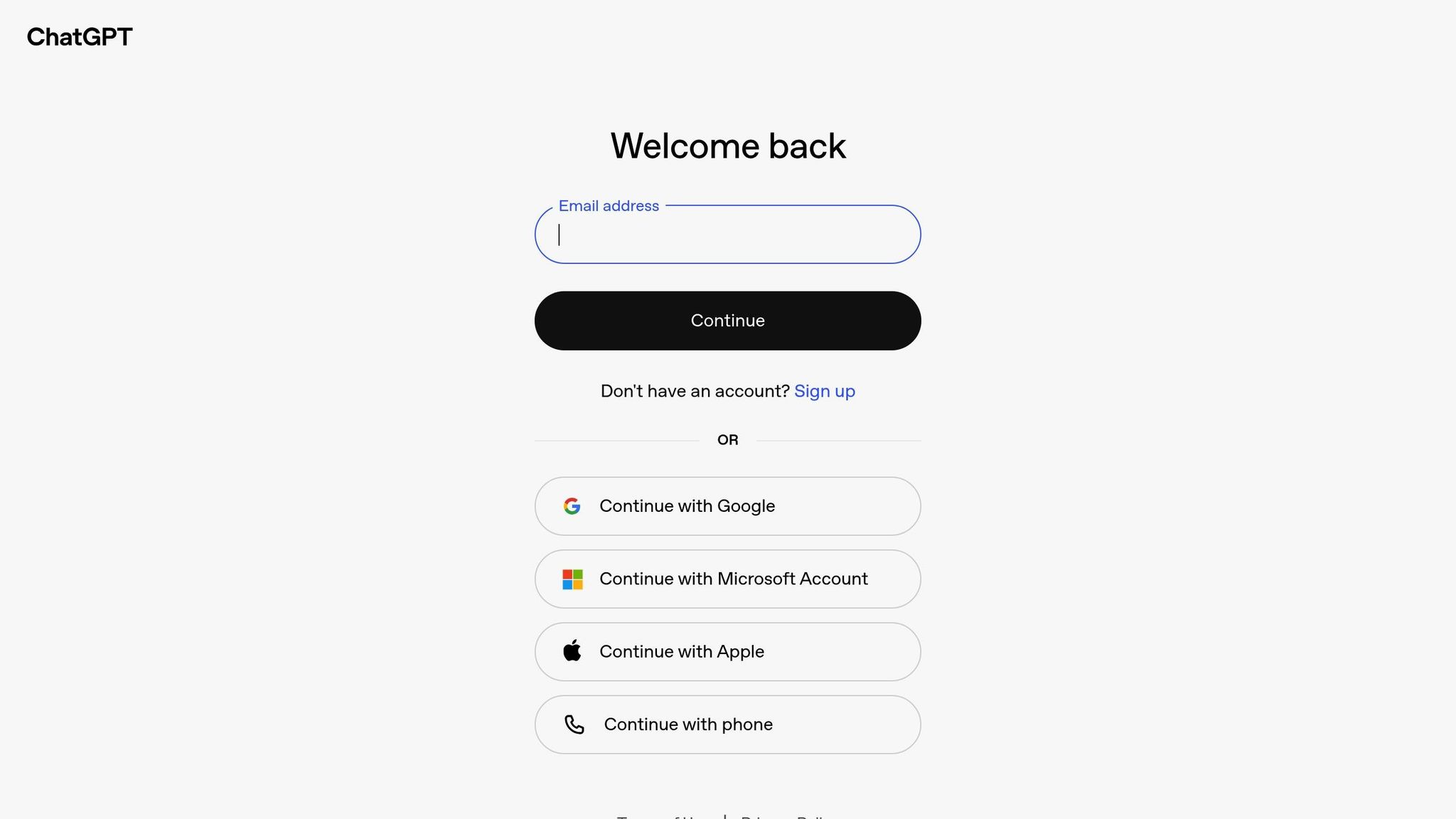
ChatGPT is a versatile tool for creating personalized follow-up email drafts. Provide it with details from your interview - like the interviewer's name, key topics discussed, and role specifics - and it generates tailored messages that feel authentic. Whether you need a formal tone for a corporate role or a casual style for a startup, ChatGPT can adapt, helping your email stand out in a crowded inbox.
Grammarly: Polishing Tone and Clarity
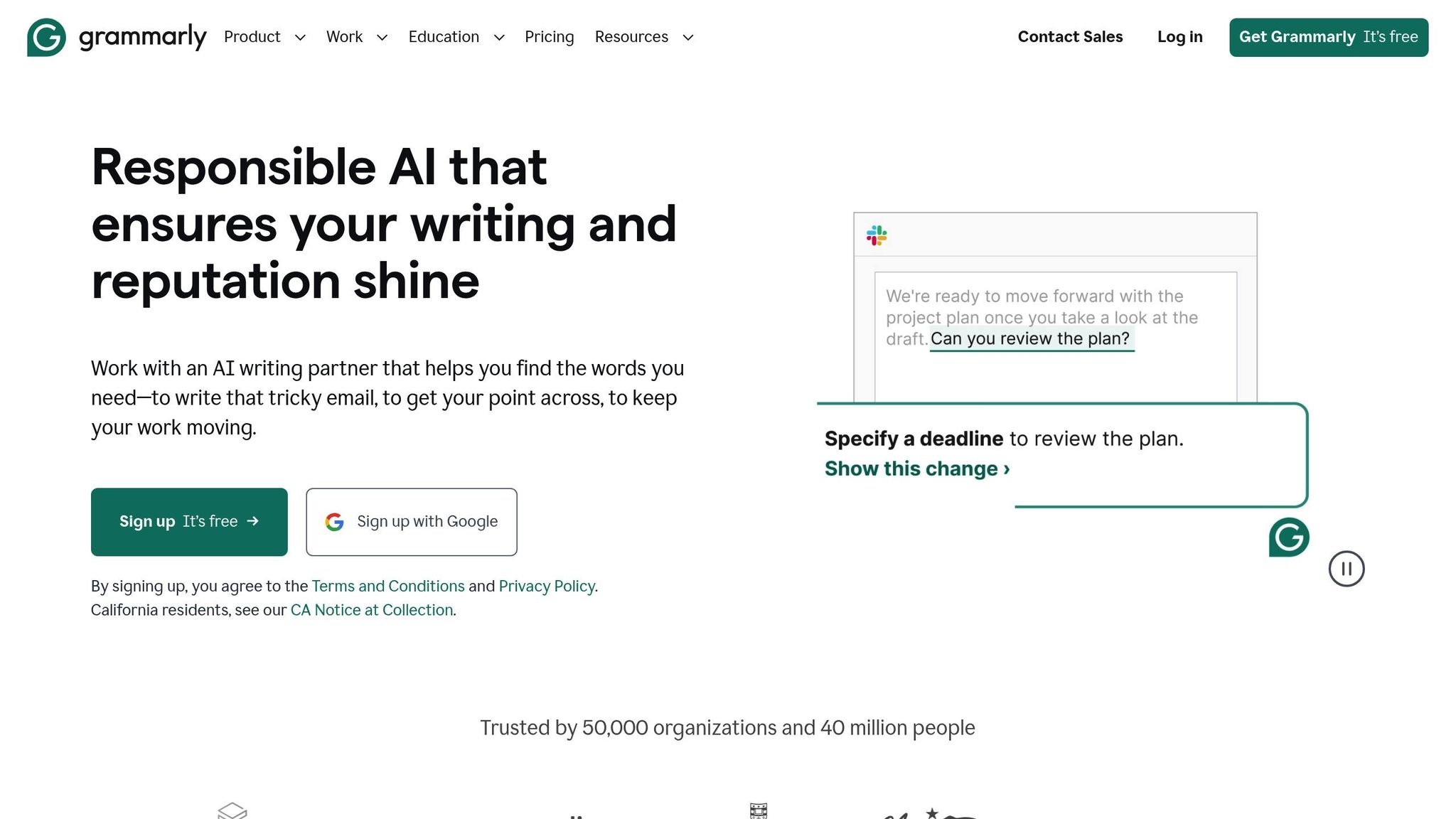
Grammarly acts as your final editor, ensuring your follow-up email is polished and professional. It checks for tone, clarity, and engagement while trimming unnecessary words to make your message concise and respectful of the recipient's time. This tool is especially helpful for balancing enthusiasm with professionalism, a key expectation in the U.S. job market.
Reply.io: Perfecting Timing and Scheduling
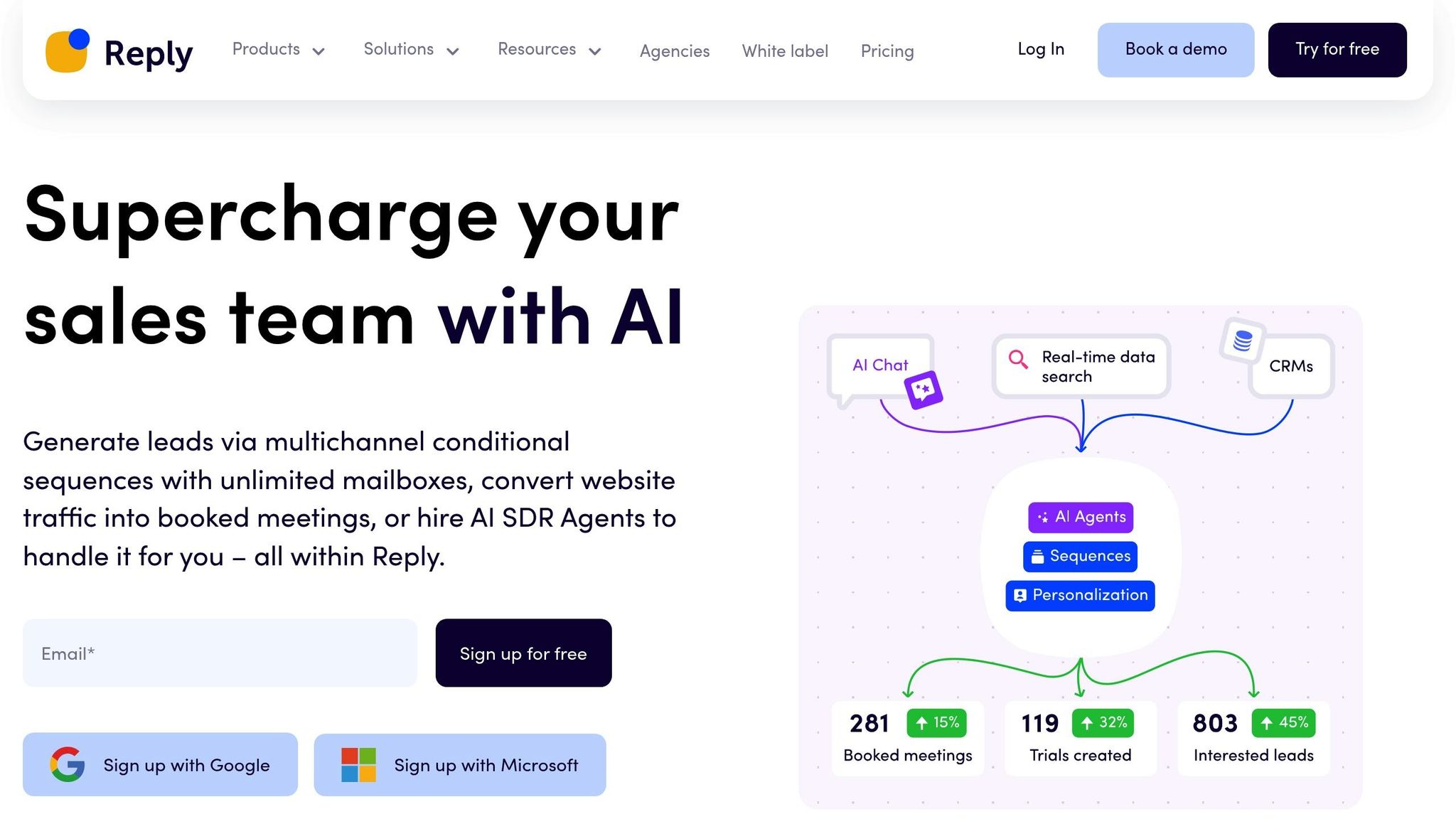
Reply.io takes the guesswork out of timing your follow-ups. Using data-driven insights, it recommends the best times to send your emails based on industry trends and recipient behavior. Its scheduling feature ensures you don’t send follow-ups too early or too late, and it tracks email opens and responses, allowing you to refine your strategy as needed.
JobLogr: All-in-One Job Search Management
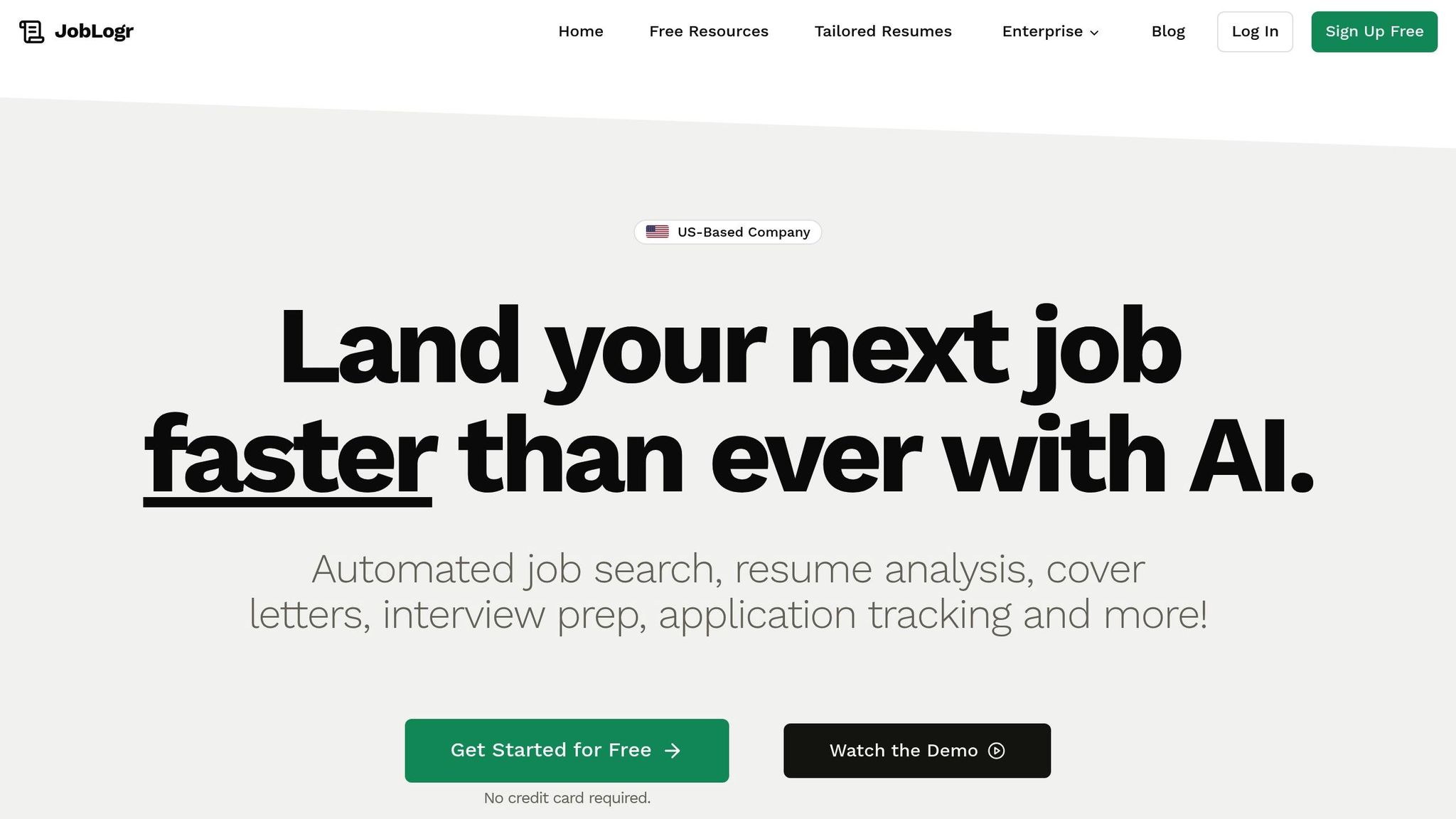
JobLogr simplifies your entire job search process, including follow-up emails. This tool offers features like automated job searches, resume tailoring, cover letter creation, and application tracking. By keeping all your job search details in one place, JobLogr makes it easier to send timely and personalized follow-ups. Plus, it offers a 7-day free trial, making it worth exploring if you’re juggling multiple applications.
Otter.ai: Capturing Interview Insights
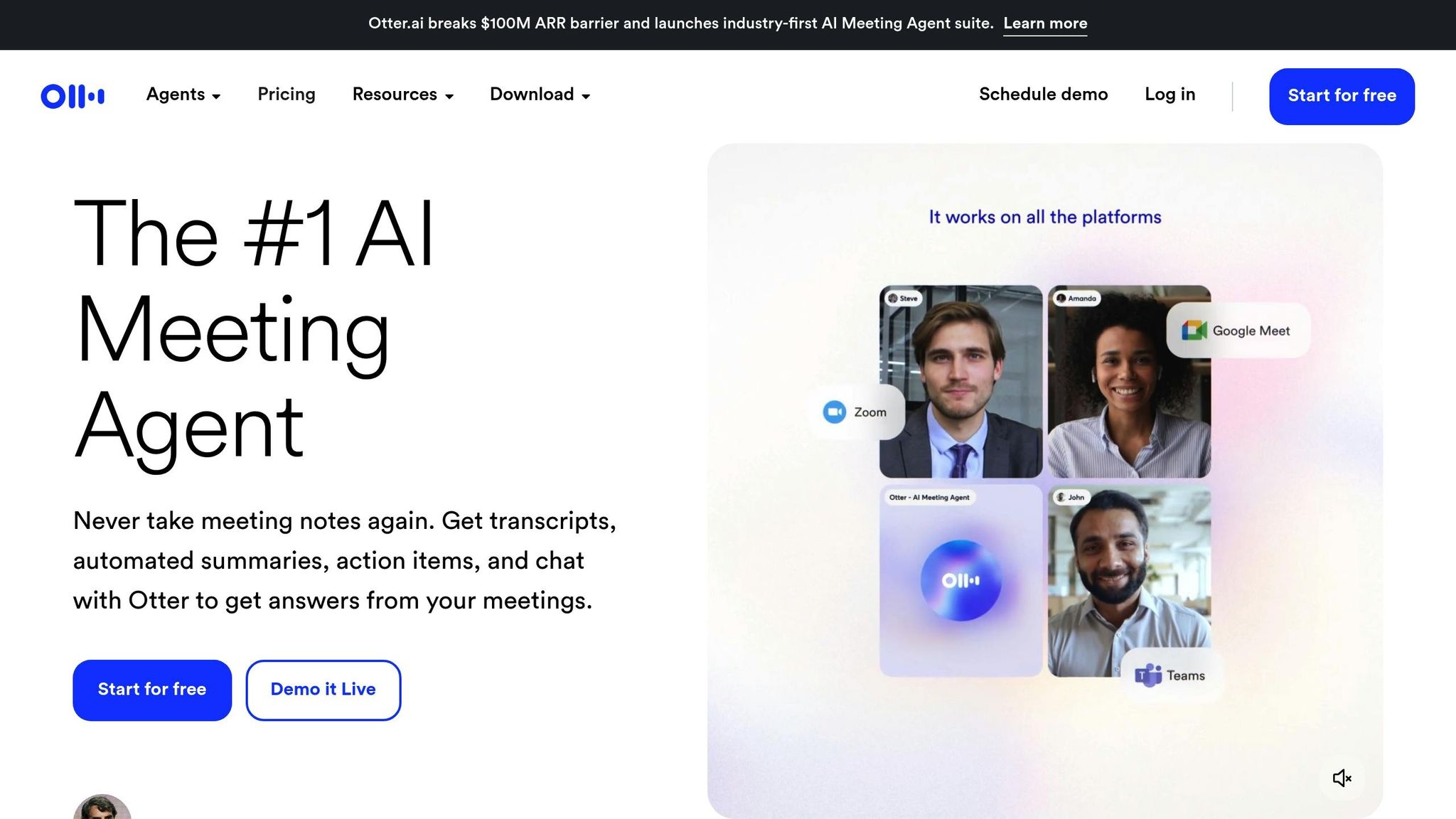
Otter.ai is perfect for turning your interview conversations into detailed transcripts and summaries. It records key points and highlights action items, giving you a solid foundation for your follow-up email. By referencing specific themes or takeaways from the interview, you can craft a message that feels thoughtful and personalized, reinforcing your interest in the role.
These tools not only save time but also help you create follow-ups that are professional, timely, and tailored to your needs. Up next, learn how note-taking technology can further enhance your follow-up strategy.
sbb-itb-6487feb
How to Use AI Tools for Follow-Up Emails
AI tools can be a game-changer for crafting follow-up emails, but their real power lies in how you use them. By pairing the right tools with thoughtful execution, you can create messages that leave a lasting impression.
Writing Personalized Content
Personalization is key to effective follow-ups. To achieve this, provide your AI tool with specific details like names, job titles, discussion highlights, and unique takeaways from your conversation.
For instance, you could prompt ChatGPT with: "Write a follow-up email to Sarah Johnson, Marketing Director at TechFlow Solutions. Mention our discussion about the Q2 2025 product launch and my experience in similar projects."
Tools like Otter.ai can help you capture critical details from interviews or meetings. Use these notes to craft a prompt that ensures your follow-up feels tailored and relevant.
When drafting your email, focus on connecting your skills or experiences to the company's needs. Reference specific challenges or projects discussed during the interview to show genuine engagement. Once the AI generates a draft, review and refine it to ensure it aligns with your tone and maintains a professional standard.
Editing and Polishing Emails
AI-generated drafts often need a human touch to meet professional expectations. Tools like Grammarly can help fine-tune grammar, clarity, and tone. However, use these tools thoughtfully - don’t accept every suggestion blindly.
Tone is particularly important. In U.S. business culture, follow-up emails should strike a balance between enthusiasm and professionalism. Grammarly's tone detector can assist in ensuring your message feels confident and appreciative without being overly casual or pushy.
Read your draft out loud to catch awkward phrasing or repetitive sections. Taking a short break before your final review can also help you spot areas that need improvement. This ensures your email reflects your own voice while remaining polished and professional.
Once your email is perfected, focus on timing its delivery for maximum impact.
Tracking and Timing Follow-Ups
Timing is everything when it comes to follow-ups. Aim to send emails midweek, and be mindful of the recipient’s industry and time zone for better engagement.
Tools like JobLogr can simplify tracking your follow-ups. By keeping a record of when and where you’ve sent messages, you can avoid duplicate emails or missed opportunities. Set reminders to stay organized and consistent.
A good rule of thumb is to send a thank-you email within 24 hours of your interview. If you don’t hear back, follow up after one week with a brief check-in, and send a final follow-up after two weeks if needed.
Using email tracking features can also provide valuable insights. If your emails aren’t being opened or responses are minimal, experiment with different subject lines, timing, or calls-to-action. Over time, documenting these patterns can help you refine your approach and build a personalized strategy for effective follow-up communication.
Conclusion
AI tools have transformed how we approach follow-up emails, making the process of drafting, editing, and scheduling more efficient and effective. These tools help craft personalized, professional messages that stand out in crowded inboxes. By combining smart content creation, polished editing, and strategic timing, you can greatly improve your chances of getting a response from potential employers.
Why AI Tools Are Game-Changers for Follow-Up Emails
The real strength of AI lies in three main areas:
- Personalization: Tools like ChatGPT make it easy to tailor your emails by weaving in specific details about conversations or company needs. This level of customization shows genuine engagement and thoughtfulness.
- Polished Communication: Editing tools like Grammarly help refine tone and clarity, ensuring your emails strike the perfect balance of enthusiasm and professionalism. This is especially helpful for job seekers who may not feel confident in their writing or for non-native English speakers navigating U.S. workplace expectations.
- Timing and Organization: AI-powered tracking systems simplify the process of sending follow-ups at the right time. Whether it’s sending a prompt thank-you note or scheduling your next outreach, automated reminders and organized records keep your communication on track.
By leveraging these tools, you can elevate your follow-up strategy and make a lasting impression.
How to Get Started with AI Tools
To put these ideas into action, start by identifying tools that address your specific challenges. For instance, use ChatGPT to draft personalized messages and JobLogr to organize and schedule your follow-ups.
The key is to practice and refine your approach. Start small - apply these tools to your next interview follow-up. Once you’re comfortable, expand their use to other professional communications. Remember, AI works best as a partner to your authentic voice. Always review and tweak your messages to ensure they reflect your personality and genuine interest.
If you’re curious about trying JobLogr, take advantage of their 7-day free trial and money-back guarantee. This platform offers a seamless way to manage resumes, track applications, and schedule follow-ups, helping you stay consistent and professional throughout your job search journey.
FAQs
How can AI tools help job seekers write personalized follow-up emails for different applications?
AI tools are making it easier for job seekers to craft follow-up emails that feel personal and professional. By analyzing key details - like the job description, company background, and the candidate's own profile - these tools create messages that are tailored to the situation.
Using specifics such as the job title, company name, or even previous interactions, AI ensures each email feels relevant and thoughtful. This level of personalization can help candidates grab attention and increase their chances of getting a response.
What should I look for in an AI tool to write effective follow-up emails?
When choosing an AI tool to help with follow-up emails, look for features that make your life easier and your emails more effective. Personalization options are key - they let you customize emails for each recipient, which can make a big difference. Automation features are another must-have, allowing you to schedule and send follow-ups without lifting a finger. And don’t overlook tools that provide analytics - these can give you insights into how recipients are engaging with your emails, so you can tweak your strategy as needed.
It’s also important to check how well the tool works with the systems you already use, whether it has strong data security measures, and if it fits your budget. Keeping these factors in mind will help you pick a tool that not only meets your needs but also streamlines your job search process.
How do AI tools help send follow-up emails at the best time for better engagement?
AI tools are incredibly effective at figuring out the best times to send follow-up emails. By analyzing recipient behavior, these tools can pinpoint when your messages are most likely to be opened and read. For instance, studies show that emails sent mid-morning on weekdays - especially between Tuesday and Thursday - tend to see higher engagement rates.
Beyond timing, AI can also handle the follow-up process for you. It tracks actions like whether an email has been opened or if there's been no response, and then schedules follow-ups accordingly. This ensures your emails reach recipients at the right moment, saving you time while boosting the likelihood of getting a response.